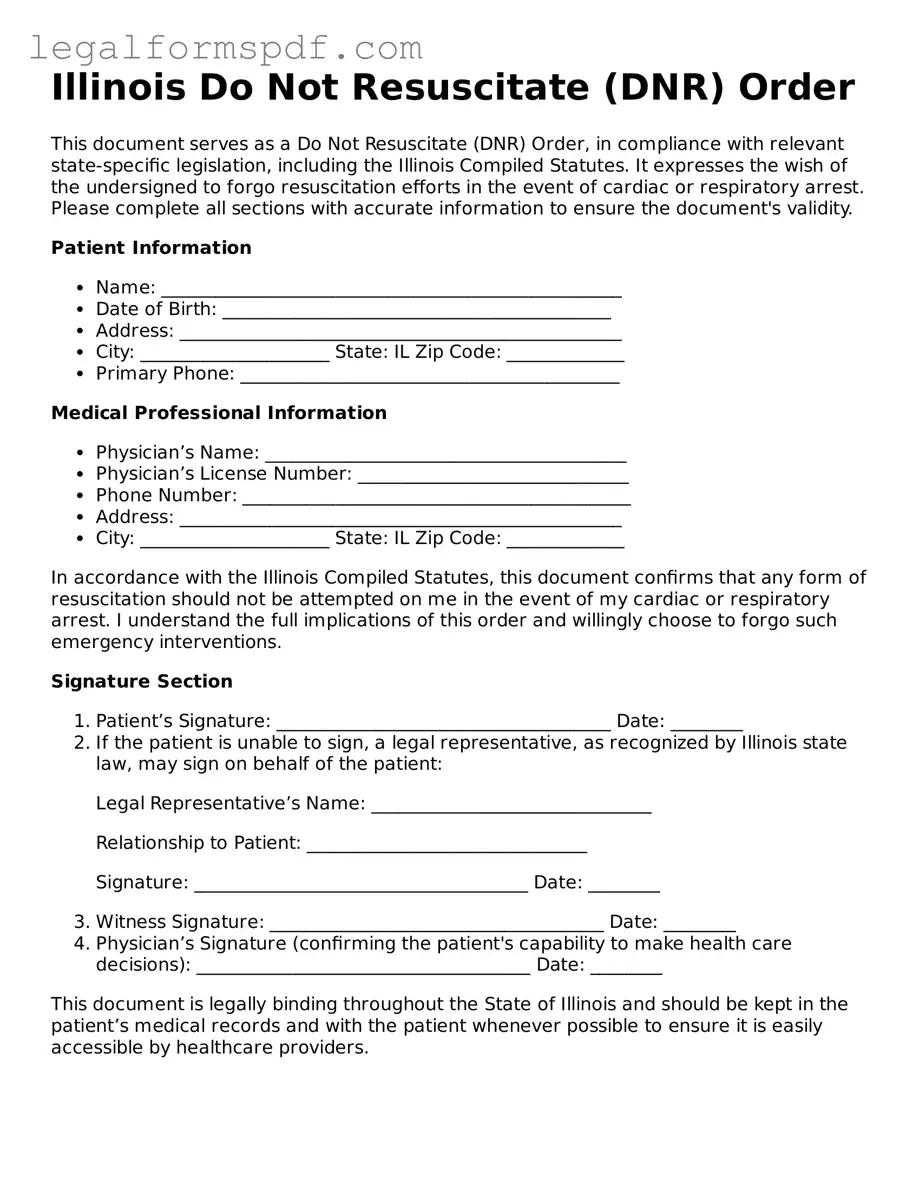What is a Do Not Resuscitate (DNR) Order in Illinois?
A Do Not Resuscitate Order in Illinois is a medical directive written by a doctor that informs healthcare providers not to perform cardiopulmonary resuscitation (CPR) if a patient's breathing stops or if the patient's heart stops beating. It is designed for patients with severe illnesses, or those who are at the end of their life, to prevent unnecessary and unwanted medical interventions.
How can someone obtain a DNR Order in Illinois?
To obtain a DNR Order in Illinois, a conversation with a healthcare provider is the first step. The healthcare provider, often a doctor, will discuss the patient's health condition, goals, and values regarding end-of-life care. After this discussion, if a DNR is considered appropriate, the healthcare provider will write the order. It's important that this decision is made by the patient (if able) or by a legally authorized representative if the patient is unable to make medical decisions.
Who should consider a DNR Order?
Individuals with a terminal illness or those with chronic, severe medical conditions who wish to avoid aggressive life-saving measures may consider a DNR Order. It is also suitable for those who value quality of life over extending life through medical interventions. Consulting with a healthcare provider can help in making an informed decision.
Is a DNR Order permanent?
No, a DNR Order is not permanent. It can be revoked or altered at any time by the patient or their designated healthcare proxy. Communication with healthcare professionals is vital to ensure that any changes to the DNR Order are clearly understood and properly documented.
Does having a DNR Order affect the quality of care a patient receives?
No, having a DNR Order does not affect the quality of care provided to a patient. The order specifically relates to CPR and does not limit other types of medical treatments or interventions. Patients with a DNR Order will still receive comprehensive care aimed at comfort, pain relief, and other treatment objectives that align with their wishes and health needs.
Can family members override a DNR Order in Illinois?
Family members cannot override a DNR Order in Illinois if the order reflects the patient's wishes and was appropriately obtained. However, situations may arise where family members disagree with the patient's decision. These cases highlight the importance of clear communication and legal documentation, such as healthcare powers of attorney, to ensure that the patient's desires are honored.
What should be done with the DNR Order once it's obtained?
Once a DNR Order is obtained, it should be placed in a location where it is easily accessible to EMS personnel and other healthcare providers, such as in the patient's home or on their person if possible. Copies should also be provided to relevant parties, including family members and healthcare proxies, to ensure the order is respected across all care settings.
Is the DNR Order recognized outside of hospital settings?
Yes, in Illinois, the DNR Order is recognized both in hospital settings and by emergency medical services (EMS) outside of hospitals. It's crucial the order is immediately available to emergency personnel, who should respect the wishes documented in the DNR Order.
Are there legal implications for healthcare providers who follow a DNR Order?
Healthcare providers who follow a valid DNR Order are typically protected from legal action regarding their compliance with the order. Illinois law provides immunity to healthcare providers who, in good faith, follow a DNR Order, ensuring that the patient's wishes are honored without placing the provider at risk of legal repercussions.
